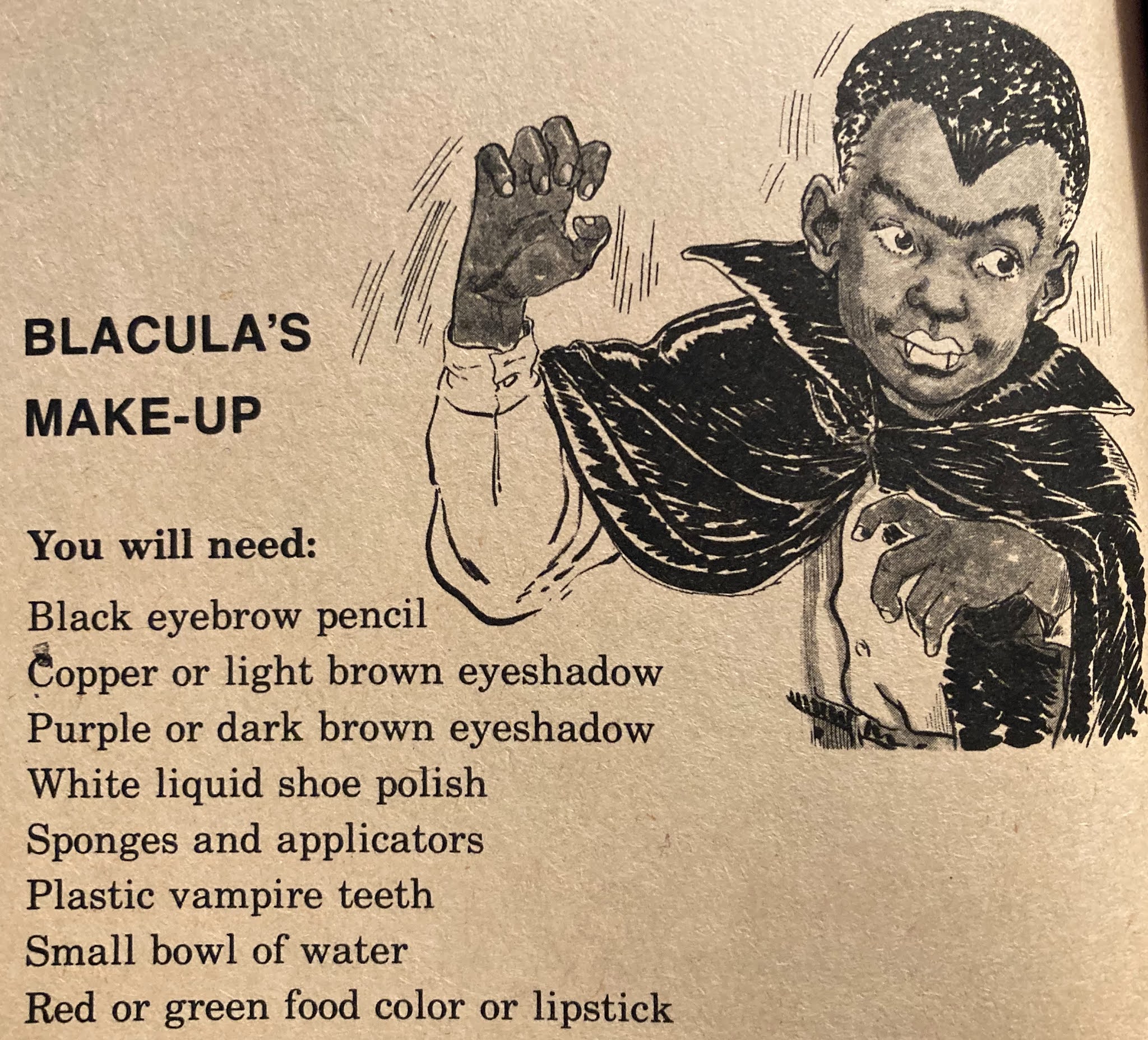Ormsby's only significant acting credit, meanwhile, is a big one in the realm of cult horror movies. He plays the obnoxiously dressed and mannered lead character in the 1972 zombie film Children Shouldn't Play with Dead Things (see the 2013 Papergreat post "Which movies gave you the biggest fright?"). His character in that movie, pictured at right, is so despicable that there are cheers at the end when he gets his comeuppance at the hands (and jaws) of the undead.
Also in the 1970s, Ormsby was the creator of Kenner's Hugo: Man of a Thousand Faces doll, which was kind of a do-it-yourself Lon Chaney Sr. makeup set, except that the doll looked like Ed Harris after a bad acid trip. One of the places Hugo lives on these days is in the adventures of Jillian and Addie over on YouTube.
In addition to all of this, Alan Ormsby authored a Scholastic Book Services book in 1975. Which brings us to this post. The nonfiction book is titled Movie Monsters, with the subtitle "Monster Make-Up & Monster Shows to put on." Ormsby further explains the book's approach in a note to the readers on the copyright page:
"Movie Monsters has three parts: The Greatest Movie Monsters — for your delight, information, and reference, page 3; How to Make a Monster, including make-up and recipes for monsters, page 29; and How to Put on Monster Shows, page 63. Happy Ghouling!"
Ormsby absolutely knows his stuff. Part 1 starts with Chaney Sr. and works its way to explaining the magic behind the Universal classic monsters. Ormsby showers make-up artist Jack Pierce with deserved credit for the success of Frankenstein's monster and other horror icons. (Coincidentally, Ashar and I watched a documentary about Pierce earlier this month as one of the extra features on The Mummy Blu-ray.)
Ormsby quickly works his way up to 1972's Blacula, writing:
"As portrayed by actor William Marshall, Blacula is as much victim as villain: He was transformed into a vampire because he asked Count Dracula to sign a petition which would abolish slavery! Blacula's make-up is more elaborate than earlier vampires. He wears bloodshot contact lenses, and form-fitted vampire fangs (like Christopher Lee) but he also wears heavy black eyebrows and sideburns that grow up to his eyes. Dark make-up has been applied around his eyes and his hairline has been filled in to make it more prominent."
In the second section of the book, Ormsby discusses his own history with make-up effects. There's an adorable picture of him as a vampire at age 12 (which would have been circa 1955). He discusses the importance of light and shadow; safe ways to make warts, blood and scars; and ultimately how kids can transform themselves into Dracula, Blacula, Countess Dracula, the bride of Frankenstein, the phantom, the mummy, the wolfman and more. And there's an emphasis on making sure kids don't get into hot water.
"You will need your parents' approval and cooperation to do some of the make-ups and recipes," Ormsby writes. "In fact, you may need their financial help, so be sure to check with them before you start cooking up monsters. ... Don't 'borrow' your mother's or big sister's make-up materials without their permission. This includes powder puffs." Ormsby also rightly insisted that kids, for health reasons, not use talcum powder. (If only others had been so proactive.)
The final section of Ormsby's Movie Monsters gives tips for putting on a "monster show," be it at school, a carnival, for Halloween, or for whenever. He even gives kids a sample sketch that they can perform or adapt as they see fit. There are directions for including some pretty cool special effects in the production, too, including a disappearing ghost, a floating head and spooky sound effects.
All in all, it's a nifty and creativity-encouraging book. I can see why there's so much nostalgia for it in comments on Amazon and Goodreads. Some excerpts:
- In 2007 on Goodreads, Don Roff wrote: "This book gave me the courage -- at a young age -- to hoist my love-of-monsters freak flag high for all to see. I used to make myself up as Dracula or the Wolf Man and prowl around the Saturday-night neighborhood, growling at unwary pedestrians through the hedges. The book is probably a big reason why I work in the film industry -- it was a look-behind-the-curtain peek at magic world of monster movies."
- In 2012 on Amazon, James E. Transue III wrote: "I picked up this book when I was in grade school - probably at one of those book fairs they have. I loved it and read the instructions over and over. I memorized the 'monster show' in the back. To use the vernacular of that time, it was awesome!"
- In 2014 on Amazon, R.M. Ries wrote: "I have loved this book since I was 7 years old."
- In 2009 on Goodreads, John Young wrote: "I wrote a will at age 8 which specified that this book was to be buried with me. It was a life-changer!"
- In 2013 on Goodreads, Michael wrote a long review that concluded: "I guess I have to say thank you, Alan Ormsby, for adding so much pleasure to both my childhood and my childish adulthood."






























